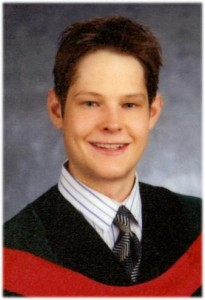
Tore Martin Purdy, a 28-year-old Edmonton lawyer passed away on April 15, 2014. It took several weeks before the news came out that his online alias was “JLikens”, who was well-known as a pioneer in the hockey analytics community. The news was made public by Sapp Macintosh who made an announcement at the 1st annual Alberta Hockey Analytics Conference on May 24, 2015.
Tore accomplished so much in his lifetime. Among his many achievements, the work he did to extend our knowledge of hockey analytics has had a lasting and profound effect.
JLikens’ Contributions to Hockey Analytics
https://twitter.com/BSH_EricT/status/470409179471953920
Objective NHL was a blog created by Purdy in an attempt to correct a mistaken perception among some hockey fans, that there is a positive relationship between save percentage and shots against. JLikens’ first post would prove that this claim is unsubstantial and set the tone for the rest of his posts, using the scientific method to address many different matters in hockey’s, then budding, analytics community.
Between the years of 2008-2011 while attending law school, JLikens did extensive research using statistics like Corsi and Fenwick, that would not only validate the use of these stats as a predictive measurement, but he also improved upon them.
https://twitter.com/mc79hockey/status/470399845069373440
At the time of Objective NHL’s conception, there was but a handful of bloggers who were really testing the waters in hockey analytics, or “fancystats”. Many things that we take for granted on advanced statistics sites, like Extra Skater, required extensive research by key individuals. One of the more important elements that JLikens added was using even strength data with the score tied, or close, to eliminate what we now call “score effects”.
Eventually, the analytics community would begin paying closer attention to Corsi or Fenwick percentage when the score was within one goal during the first two periods, and tied in the third. In doing so, you can eliminate the effects of a more passive offense when a team is defending a big lead. This has led to more accurate ratings of a team’s Corsi or Fenwick, and has proven to have a certain level of predictive power in forecasting a team’s success.
“Score close” is the first layer of context that is added to Corsi% or Fenwick%, followed by zone starts (which JLikens also discussed), quality of competition and quality of teammates.
JLikens’ final post on Objective NHL will be the first one you see when you visit his blog. In the post titled “How often does the Best Team Win?” JLikens provides a thorough review of his method used to get the answer: 22%.
Remembering JLikens
When the news finally came out that JLikens had passed, many of the bloggers who he influenced were compelled to speak out on twitter.
JLikens should be remembered as an identity that had an objective view on the sport and in his research. His humility knew no bounds. During the 2009-2010 season, he began tracking scoring chances for every Minnesota Wild game. Simultaneously, Scott Reynolds at Gospel of Hockey was tracking scoring chances for the Colorado Avalanche that season. When the Wild and Avs played against each other, Scott wrote about the differences the two bloggers had when crediting a player with a scoring chance. In the comments, JLikens addressed each and every difference the two had.
It seems like an understatement to call Tore Purdy a genius. His work opened up the path that many of us walk down as we explore the story behind the numbers in hockey today. As the analytics community continues to grow and improve upon their methods, it’s a shame to know that one of their pioneers will not be around to see what advancements take place.
Comments are closed.